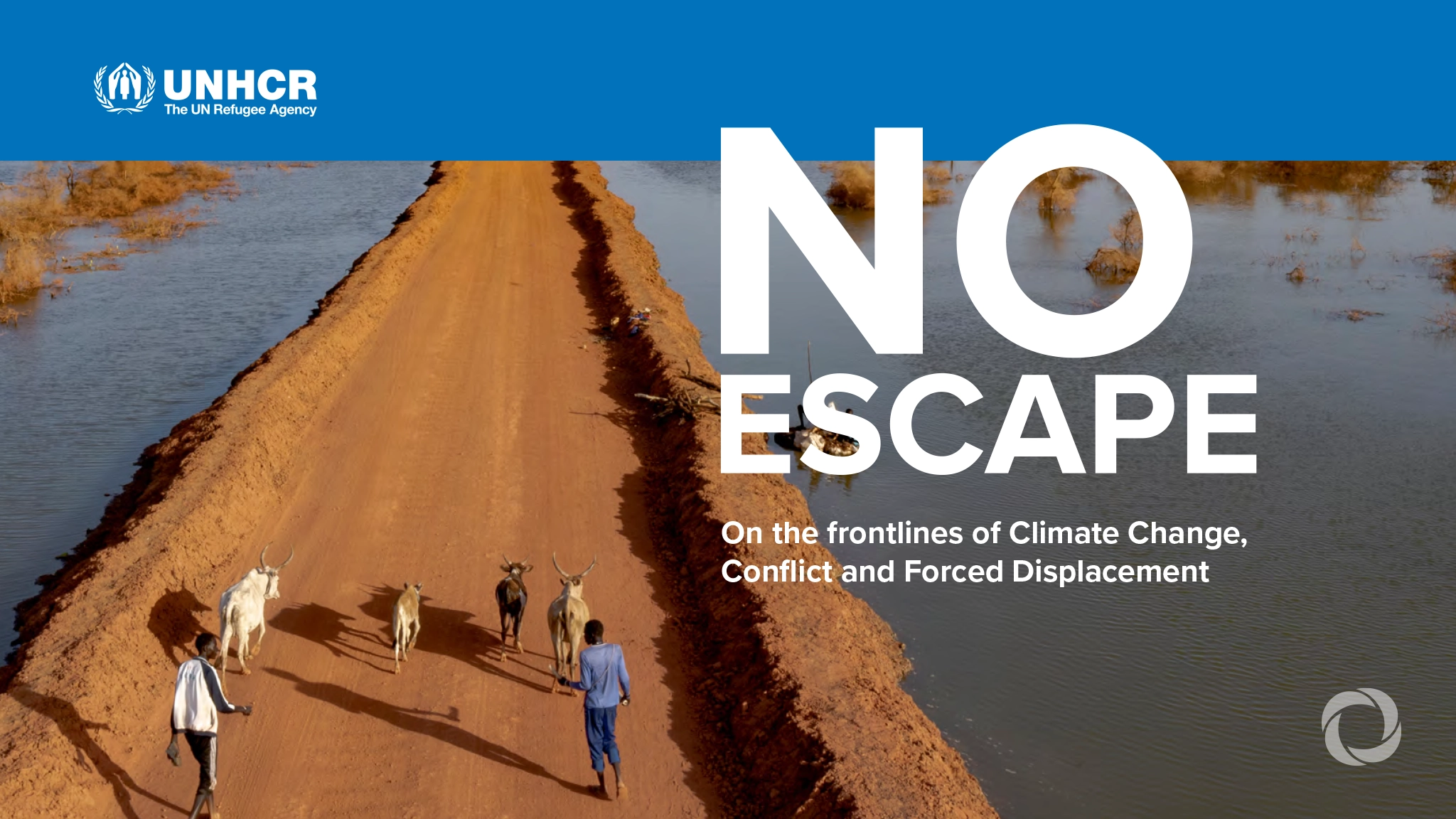Ninety million displaced people live in countries facing serious climate hazards, and nearly half of all those forced from their homes now face both conflict and climate change at once, a new United Nations High Commissioner for Refugees (UNHCR) report shows. The report, “No Escape: On the frontlines of climate change, conflict and forced displacement,” looks at how climate change, conflict and displacement overlap. Over the past 10 years, the number of forcibly displaced people worldwide has doubled to more than 120 million.
Conflict is still the main reason people flee their homes, but climate change makes things worse. The impacts hit the world’s most vulnerable people hardest—refugees, those displaced by conflict, and the communities hosting them. These populations often lack stable housing, money, government support, or access to basic services. Now they also face floods, droughts, and heat waves they can’t prepare for or recover from. Countries dealing with both crises include Sudan, Syria, Haiti, the Democratic Republic of the Congo, Lebanon, Myanmar, Ethiopia, Yemen, and Somalia.
Climate change is also pushing more people to leave their homes. Weather-related disasters have caused 220 million internal displacements over the past decade—that’s about 60,000 people every day. In 2023, more than a quarter of these happened in places already torn by conflict. Some people move temporarily, others for years. Most try to stay near their communities, hoping to return home when they can.
The risks ahead are growing. By 2040, the number of countries facing extreme climate hazards is expected to jump from three to 65. Most of these countries host displaced populations. Heat will get worse too—most refugee camps and settlements will see twice as many dangerously hot days by 2050. When climate shocks hit both the places people fled and where they’ve ended up, there’s nowhere left to go.
Climate change makes it harder for displaced people to find lasting solutions. It raises the chance they’ll be stuck in limbo, forced to move again, or pushed onward to new places. By the end of 2023, more than 70 percent of refugees and asylum-seekers came from countries that are highly vulnerable to climate change but least prepared to build resilience. This makes returning home much harder. The report points out that displaced populations and their host communities often go unnoticed, their voices left out of the conversation.

